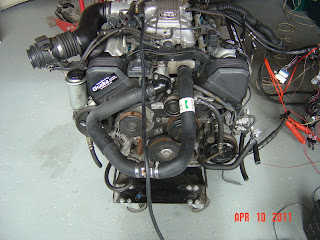Would I do it again....yes but on the condition that I had a complete car to start with. The issues I keep coming up against all relate to the fact that I am dealing with cut looms. Trying then to recreate what is not there by looking at other cars is not ideal. The main reason being is that it is simply not practical to take my wiring loom along to Pick a Part to try and marry that up to another car. Add to that the fact that each car has a slightly different set up it seems and also the fact that every car I have had access to has had bits taken off it, so again I am not dealing with a straight forward view of what used to be.
So is it all worth it? I guess many would say no but two factors come in to play for me....firstly I want climate air and secondly I am determined not to let this beat me.
I have to admit though I am really hoping this will function and operate as intended. If on the other hand I plug it all in and there is a fizzling sound accompanied by the smell of burnt plastic and wafts of smoke, I will be less that pleased and at that point my resolve to have climate air will well and truly dissipate.
Anyway, I have just got back from Pick a Part having spent 6 hours there yesterday opening up looms so I could trace wires, I had to go back to finish tracing. If not I would almost certainly have to start all over again. The cars don't stay at Pick a Part long before being crushed and there are plenty of other people raiding these cars for bits.....so despite the rain it was back there to trace more today.
You get an idea here of just how horrible the working conditions are and just how much of the wiring I needed to pull out to trace individual wires.
This is the car I pulled apart. The car seats on the ground are so I was standing in ankle deep puddles and mud.
Here's another view.
This is inside the passengers footwell. I had removed the heater aircon unit so I could get to the looms going out through the firewall.
This is an overall view under the hood.
This is the front passenger side. The battery would normally go in this corner. I had been missing a lot of this wiring as the loom had been cut at this point on the donor car when they took the engine out. They had also taken the large fuse/relay block that was critical for me to be able to track the destination of some of the important wires.
This is along the front of the car. All these wires came out from behind the radiator.
This is the front drivers side. Here there is another block of relays mostly for the radiator fans. This block was with my original wiring but many of the wires had been cut off so having them mostly complete was a bonus.
So all in all time well spent in the long run I am sure. I still have two more wires to trace as they had been cut on this car as well and I will still need to find where they go. Apart from that there are 3 wires I need Phil Bradshaw's help with. They all go to the computer......but I won't be using the Celica computer it will be the one from the Lexus that I will be using so I somehow need to translate the Celica wires onto the Lexus computer.....um.....Phil.....um .....excuse me but could you just.........











